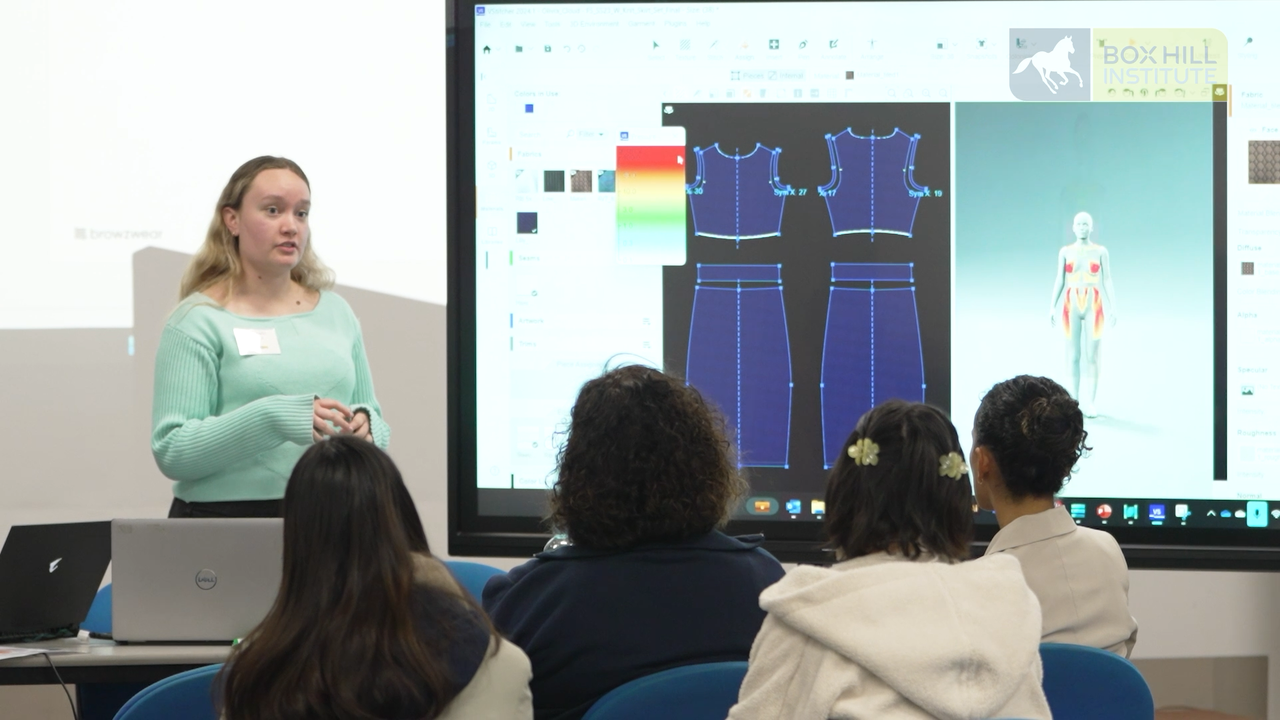What is 3D Fashion Design and How Does it Shape Fashion's Future?
Discover how 3D fashion design transforms the industry with enhanced sustainability, efficiency, fit accuracy, customization, and innovation.
February 11, 2025

Box Hill Institute’s annual fashion show in December was a vibrant showcase of student creativity, highlighting their skill in blending traditional craftsmanship with cutting-edge digital product design technology. The event continues to resonate as a testament to how emerging designers are poised to redefine the future of fashion.
At the heart of this showcase was the remarkable journey of Lilly Cavallin, a student who navigated a multifaceted design process enriched by hands-on experience with digital tools like Browzwear.
Lilly’s design journey began with concept development and fabric storytelling—the essential elements that gave her collection its cohesion and depth. Her vision was to tell a narrative through fabric selection, an approach that grounded her designs in both meaning and innovation. This foundation laid the groundwork for what would become a seamless collaboration between physical garment-making and digital prototyping.
One of the standout moments in Lilly’s journey was creating a virtual twin for one of her key looks. Simultaneously working on both the physical and digital prototypes, she navigated the challenges of adapting traditional pattern-making and garment construction methods to fit digital design parameters in Browzwear.
Dr. Lize Niemczyk, Academic Course Manager at Box Hill Institute, highlighted this transformative experience:
"The accuracy of the virtual twin, when compared to physical patterns, demonstrated how digital tools enhance the design process. It was a pivotal moment that showcased the potential for a seamless transition between virtual and physical prototypes."
Lilly’s commitment to sustainability was evident as she sourced leather from scrapyards and upcycled car seats into her designs. This eco-conscious approach, combined with her digital design skills, underscored how technology and sustainability can go hand in hand in the future of fashion design.
"I just really wanted to find a way to upcycle some of that waste." - Lilly explained, highlighting her dedication to reducing fashion’s environmental impact.
Browzwear technology allowed her to test fabric physics, refine garment fit, and minimize the need for excessive sampling—all critical steps in making her process more sustainable.
Beyond her individual project, Lilly joined her peers in collaborating with the industry to design an activewear range using Browzwear’s software. The project emphasized the scalability of digital fashion design for commercial purposes and provided students with invaluable industry-relevant experience.
According to Dr. Niemczyk:
"We collaborate with industry and digital fashion design software experts to ensure our students acquire the skills that employers seek now and in the future. The success of this approach is evident in the students' ability to master digital tools in just three months—a process that often takes professionals six to twelve months."
Students at Box Hill Institute are not just learning fashion design; they are being prepared to lead the industry into a more sustainable and technologically advanced future. Through workshops, hands-on training, and industry collaboration, they are gaining skills in pattern-making, sewing, and business that will serve them well in their careers.
As Lilly puts it:
"I'm leaving my name behind but not a massive footprint. I'm excited to show the industry everything I can do."
With students like Lilly leading the way, Box Hill Institute is shaping the next generation of designers who are ready to leave a lasting impact—inspired by tradition, driven by innovation, and committed to sustainability.
Discover how 3D fashion design transforms the industry with enhanced sustainability, efficiency, fit accuracy, customization, and innovation.
Shih Chien University’s talent program blends AI, 3D garment simulation, and sustainability with strong industry support from Browzwear.
Learn how technology, data-driven strategies, and emerging regulations are shaping a resilient, eco-conscious supply chain for the future of fashion.